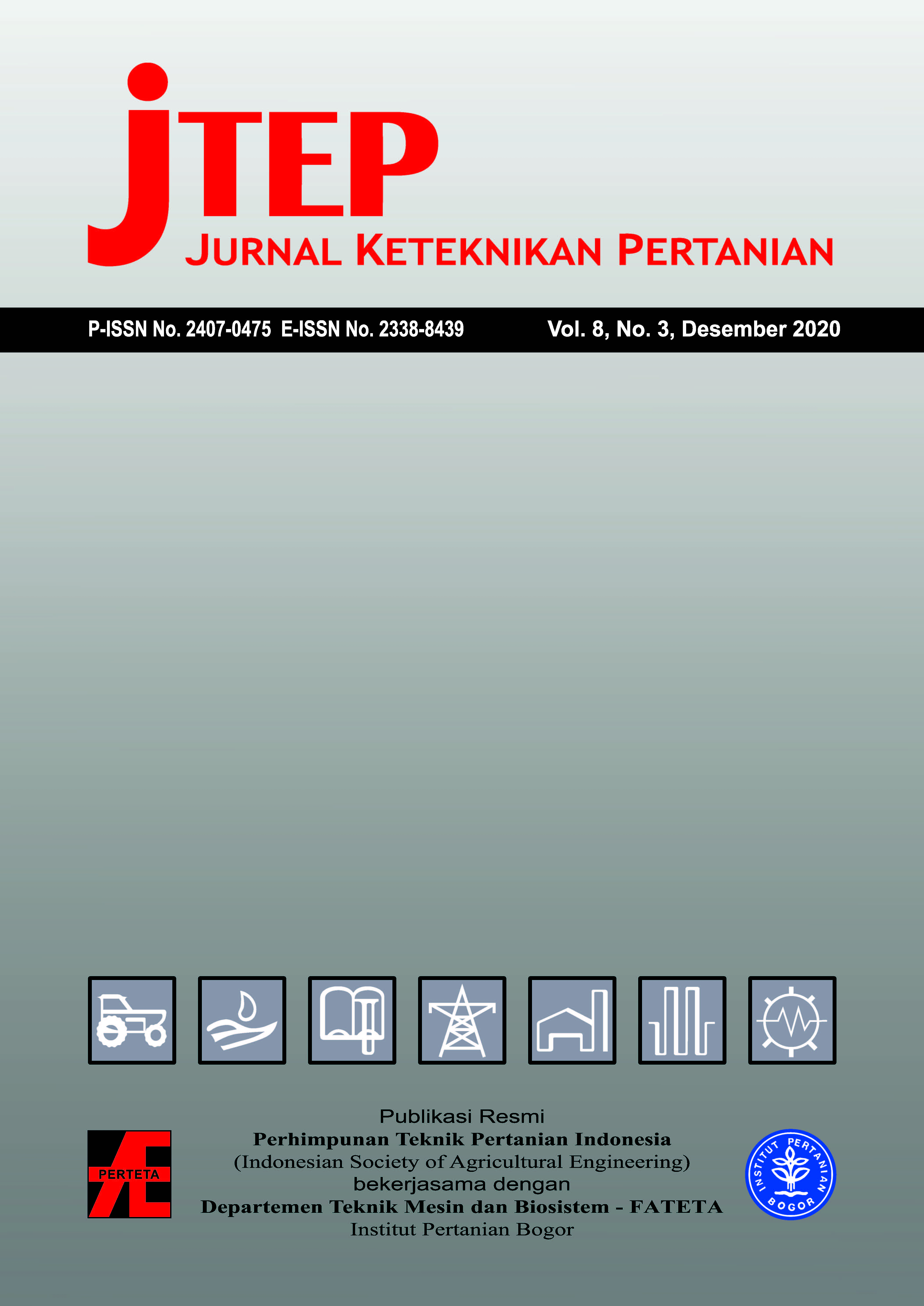Performance Test of Various Teeth Diameter of Cylinder Type Sago Rasping Machine
Abstract
Traditional method of sago starch extraction was a time and labor intensive process. The most laborious stage is pith disintegration which is done by using hammer-like tools called pounder. However, the use of rasping machine to disintegrate the pith is saving time and energy significantly. The objective of this study was to investigate the effect of teeth diameter and cylinder rotation speed on performance of cylinder type sago rasping machine. In the experiment, four variations of teeth diameter i.e. 3mm, 4 mm, 5 mm and 6 mm, and three levels of cylinder rotation speed i.e. 1500 rpm, 2000 rpm and 2500 rpm were examined. Results showed that both teeth diameter and cylinder rotation speed significantly affect the rasping capacity. Likewise teeth diameter also significantly affect on starch percentage and starch losses in waste. Meanwhile, cylinder rotation speed and the interaction of the two factors have no significant effect on the starch percentage and starch loss in waste. The highest performance was obtained at the condition of teeth diameter 3 mm with cylinder rotation speed of 2500 rpm. The performance of the machine at the condition were (a) rasping capacity 2282 kg h-1, (b) starch percentage 33.02 %, (wb), (c) starch loss in waste 8.77 %.
Authors

This work is licensed under a Creative Commons Attribution 4.0 International License.
Authors submitting manuscripts should understand and agree that copyright of manuscripts of the article shall be assigned/transferred to Jurnal Keteknikan Pertanian. This work is licensed under a Creative Commons Attribution-ShareAlike 4.0 International License (CC BY-SA) where Authors and Readers can copy and redistribute the material in any medium or format, as well as remix, transform, and build upon the material for any purpose, but they must give appropriate credit (cite to the article or content), provide a link to the license, and indicate if changes were made. If you remix, transform, or build upon the material, you must distribute your contributions under the same license as the original.

